How an Exhaust Manifold Works
#1
Lexus Champion
Thread Starter
I chopped open the exhaust manifold on my Corolla to see what's inside, and how it works.
The exhaust manifold is located behind the engine:
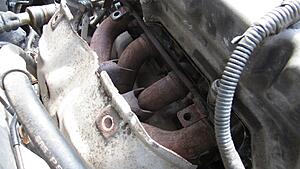
This is where it mounts to:
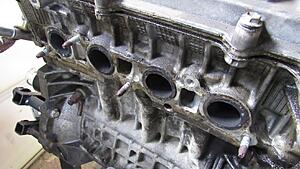
It consists of piping and a collector down to the flange:
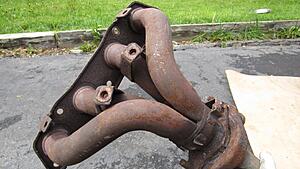
The manifold is the first part of the exhaust system:
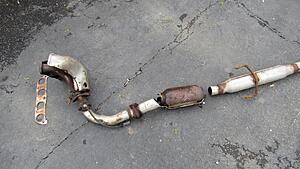
I chopped the section near the flange. To my surprise, it is double walled:
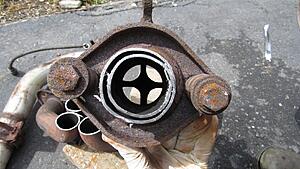
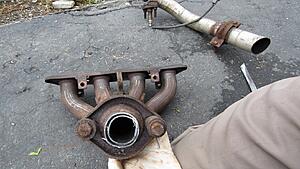
Then I cut the section near the collector:
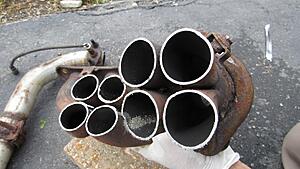
Its a bunch of tubing that flows into a X-shaped frame and then the collector:
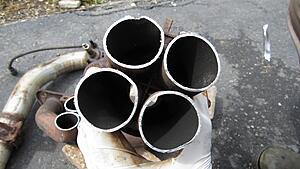
Manifolds are designed to optimize airflow out of the engine. Pressure pulses are created, with a low pressure zone trailing:
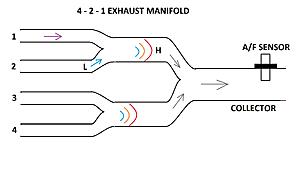
The low pressure zone helps suck remaining exhaust gases out of the combustion chamber. This is called the scavenging effect:
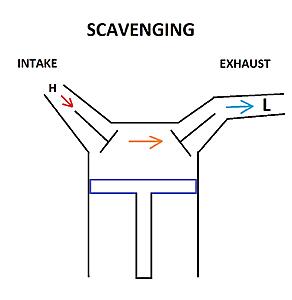
When moving to aftermarket headers which are more freer flowing, the velocity of the pressure pulses decrease, and thus the scavenging effect:
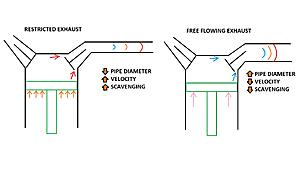
This its important to strike a balance between the header size to ensure enough gases are sucked away, but that there isn't too much back pressure caused by restricted flow.
Enjoy
The exhaust manifold is located behind the engine:

This is where it mounts to:

It consists of piping and a collector down to the flange:

The manifold is the first part of the exhaust system:

I chopped the section near the flange. To my surprise, it is double walled:


Then I cut the section near the collector:

Its a bunch of tubing that flows into a X-shaped frame and then the collector:

Manifolds are designed to optimize airflow out of the engine. Pressure pulses are created, with a low pressure zone trailing:

The low pressure zone helps suck remaining exhaust gases out of the combustion chamber. This is called the scavenging effect:

When moving to aftermarket headers which are more freer flowing, the velocity of the pressure pulses decrease, and thus the scavenging effect:

This its important to strike a balance between the header size to ensure enough gases are sucked away, but that there isn't too much back pressure caused by restricted flow.
Enjoy

#2
at the end there i thought you were going to toss the cut manifold onto the car, like your other videos *phew*! good work mr. rolla!
not sure i like the double wall as it's even smaller inside! i do see some aftermarket headers employ chambers where the exhaust gas can enter in between the pipes - doesn't seem to be the case with the toyota design.
not sure i like the double wall as it's even smaller inside! i do see some aftermarket headers employ chambers where the exhaust gas can enter in between the pipes - doesn't seem to be the case with the toyota design.
#3
Pole Position
Kinda funny cutting a Corolla manifold....To add the hot exhaust gases add velocity exiting the exhaust ports...... 180 degree headers on a v/8 is your best scavenging headers....Add to the fact.....Whats the flow rates of the heads? If they're under 75% then that dictate a dual pattern cam, which would dictate a 1.625'' to 1.750'' primary tubes w/ a 32-35'' primary tube lengths..... Better flowing heads such as a pr of Apache heads(385 @ .600''- 395 @ .700'' cfm) go w/ a 2.125''- 2.250'' primary diameter tubes as well as a 30''-34'' primary lengths. Great kinda write up on a Corolla manifold......Lets see a write up on a reverse flow setup ......or reverse induction set up such on a 6.7 'stroke, or on early 255'' Ford Gurney/Westlake heads.....
Thread
Thread Starter
Forum
Replies
Last Post




